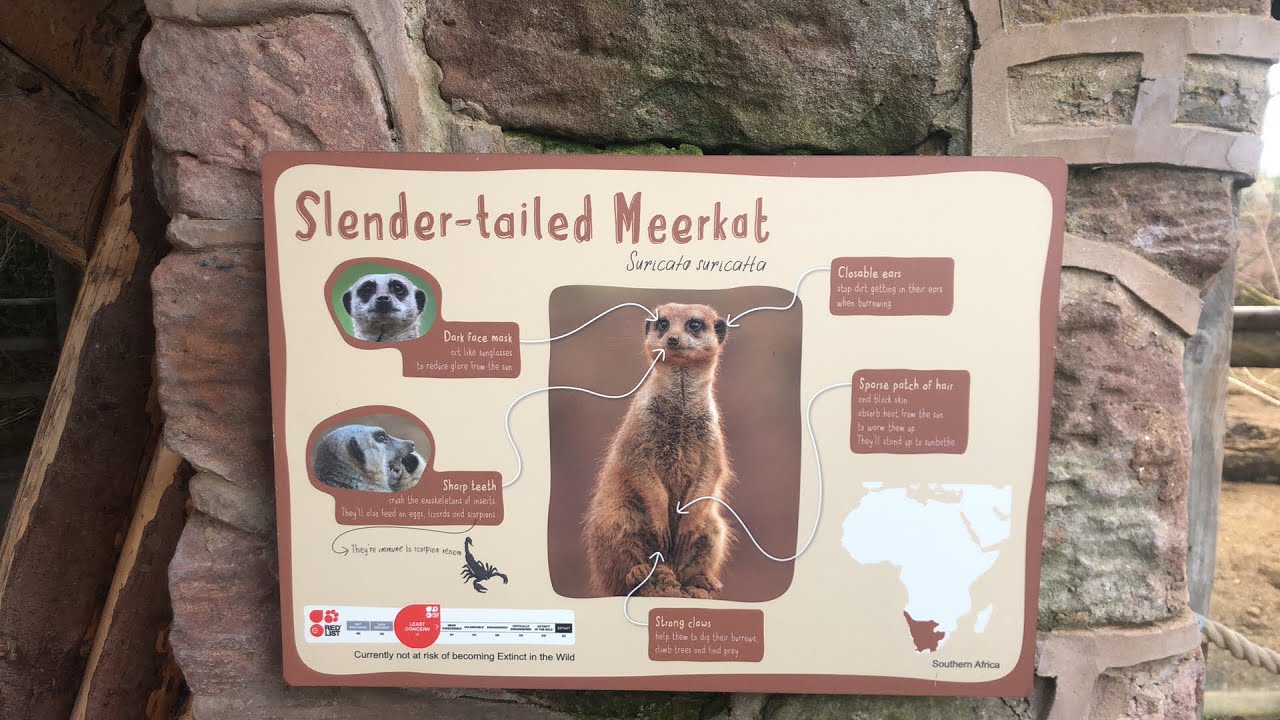*****
Summary of Transcript:
The video features a group of meerkats fed mealworms and locusts at a zoo. The presenter explains that meerkats are carnivores and eat bugs, small animals, birds, lizards, and anything they can get their teeth into in the wild. The meerkats are adapted to live in the desert and have many adaptations, including stripy fur that helps them blend in with the sandy environment, a tail that acts as a tripod to help them stand up, and inbuilt sunglasses around their eyes that help them look up at the sky for predators. Meerkats are social animals that can live in mobs of up to 50 meerkats and communicate with each other using different vocalizations. The presenter also mentions that meerkats are not as cute as they seem and that their food intake needs to be monitored to prevent them from becoming overweight. Despite being survivors, they are still affected by climate change and habitat loss. However, as they are a popular attraction in zoos, they serve as ambassadors for less charismatic endangered animals.
*****
The Meerkat Menu: A Deep Dive into Meerkat Diet and Feeding Habits
Meerkats, or suricates, are fascinating small mammals from the mongoose family. These social creatures are primarily found in the arid regions of southern Africa, where they reside in close-knit groups called mobs or gangs. This article will explore meerkats’ diet and feeding habits, shedding light on how these intriguing animals have adapted to their environment.
Meerkat Diet: What’s on the Menu?
Omnivorous Opportunists
Meerkats are omnivorous animals, which means they consume both plant and animal matter. While they prefer insects, meerkats will consume small vertebrates, eggs, and plant material when the opportunity arises. This dietary flexibility allows meerkats to thrive in their harsh desert habitat, where food availability is often scarce.
A Taste for Insects
Insects comprise the largest portion of a meerkat‘s diet, with termites, beetles, and larvae among their favorite snacks. These critters are abundant in meerkat habitats and provide a vital source of protein and other essential nutrients. Meerkats are also known to eat scorpions, a remarkable feat considering the evil nature of these arachnids. However, meerkats have developed an immunity to scorpion venom and are skilled at disarming and consuming these potentially dangerous prey.
Foraging Strategies: A Group Effort
Teamwork Makes the Dream Work
Meerkats are cooperative foragers searching for food in groups, using their excellent teamwork skills. This collective approach increases the chances of finding food and helps them stay vigilant against predators.
Division of Labor
During foraging sessions, meerkats assume different roles within the group. While some members dig for insects or hunt small vertebrates, others watch for potential threats. As they are called, the sentinels stand on their hind legs and use their keen eyesight to scan the environment for predators like birds of prey, snakes, and jackals. The sentinel warns if danger is spotted, prompting the foraging meerkats to seek shelter.
Adapting to the Environment
Resourceful Diggers
Meerkats are expert diggers, thanks to their long, curved claws and strong forelimbs. They use these adaptations to excavate insects, larvae, and small animals that live beneath the ground. In addition, meerkats can close their ears to prevent sand from entering while they dig, an essential skill for an animal that burrows so much.
Efficient Water Use
Living in arid environments requires meerkats to maximize the limited water resources available. While they do drink water when it’s accessible, meerkats can also obtain moisture from the food they eat. The insects and other prey they consume provide enough water to sustain them, allowing these desert dwellers to survive even in the driest conditions.
In conclusion, the diet and feeding habits of meerkats demonstrate the remarkable adaptability of these small mammals to their harsh environment. From their diverse diet to their cooperative foraging strategies, meerkats have evolved a range of behaviors and physiological traits that enable them to flourish in their unique habitat.
*****
Source Description


